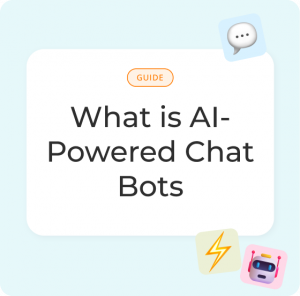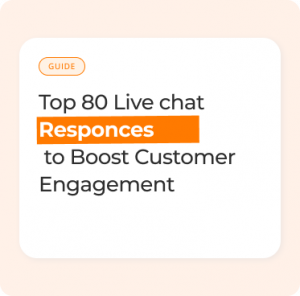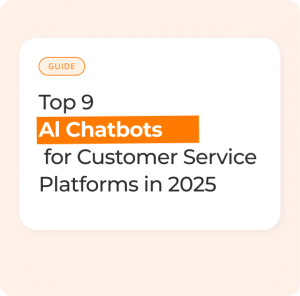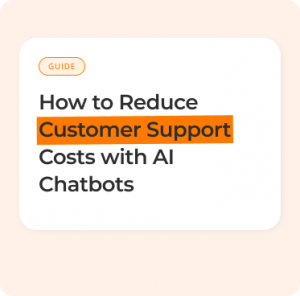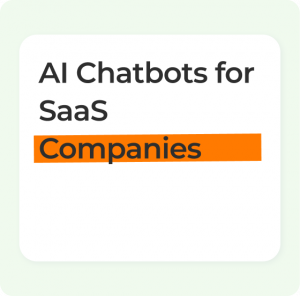Meta Layoffs and the Rise of AI Chatbots

Summary: Major tech downsizing linked to AI is a signal, not an anomaly. This article explains what the shift means, how AI chatbots work, and practical steps to use them to reduce costs, protect margins, and improve customer experience without sacrificing the human touch.
Meta Layoffs in Context
When large platforms streamline teams and cite artificial intelligence as a driver, the market reads it as a directional change. Automation is not a side project anymore. It is a core capability that shapes org charts, budgets, and go to market strategies. The most important takeaway for business leaders is not the headline itself, but what it implies for competitiveness. Those who adopt AI first learn faster, execute faster, and deliver more reliable service at a lower cost base.
Layoffs at major firms often align with a playbook that prioritizes efficiency, automation, and focus. That pattern is spreading across industries. From retail and banking to SaaS and healthcare, the same question appears in boardrooms and Slack channels: how do we maintain quality while absorbing higher volumes and tighter budgets. AI chatbots are one of the clearest answers because they give teams always on coverage, consistent handling, and immediate response times.
Why AI Now
Three forces make AI adoption practical today. First, language models are strong enough to resolve a large share of customer intents with natural, brand aligned answers. Second, the cost of inference keeps trending down, which means automation can be profitable for mid market companies, not only for Big Tech. Third, customers expect real time responses across channels, which human only teams struggle to meet at scale.
- Automatable workload: Repetitive requests, status checks, and policy questions are perfect for AI.
- Data driven decisions: AI ranks intents, scores leads, and routes conversations to the right path.
- Experience expectations: Users want useful answers in seconds, not in hours.
Seen through this lens, the shift is less about job loss and more about task reassignment. People spend less time on repetitive questions and more time on complex, relationship building work.
What Modern AI Chatbots Actually Do
Modern chatbots are not decision trees. They are AI assistants that understand user intent, recall policy and product knowledge, and take action. Instead of forwarding a ticket, they answer, classify, and escalate with context. Instead of pinging a sales inbox, they qualify a lead and schedule a call. Instead of dropping a frustrated user, they offer a path to resolution across web, messenger, and email in one continuous thread.
Core capabilities you can expect
- Instant answers: Product specs, order status, pricing tiers, return policy, and troubleshooting.
- Lead capture and routing: Qualify visitors in real time and book meetings with the right rep.
- Personalization: Recommend content or products based on behavior and past interactions.
- Cross channel continuity: Keep the conversation going on Messenger, WhatsApp, Telegram, and email.
- Analytics: Track deflection rate, intent coverage, conversion lifts, and time to first response.
Running Lean Operations With AI
Leaner teams should not mean poorer service. With the right chatbot strategy, you turn a cost center into a value engine that scales without headcount. The objective is simple. Push high frequency, low complexity work to AI. Keep humans for empathy, negotiation, and edge cases. This pairing keeps average handle time low while improving customer satisfaction because users get fast resolutions and personal care when it matters.
Four outcomes leadership cares about
- Lower service costs: AI resolves the repeatable questions that clog queues.
- Faster response times: Useful answers arrive in seconds, not in hours.
- More revenue moments: Proactive prompts recover carts, grow order value, and book demos.
- Zero missed leads: When staff is offline, AI still captures contact info and next steps.
This model works in eCommerce, SaaS, B2B services, healthcare scheduling, and more. It works because it maps the right work to the right agent type, human or AI, at the right time.
Top AI Chatbot Use Cases in 2025
Ecommerce
- Answer shipping times, sizes, materials, and returns policy.
- Trigger targeted offers to reduce cart abandonment.
- Recommend products and bundles based on browsing behavior.
SaaS
- Qualify inbound leads, route by segment, and schedule demos.
- Handle onboarding questions and surface in app tutorials.
- Provide tier aware support that respects plan limits.
Financial services
- Guide users through applications with secure handoffs.
- Automate FAQs on rates, fees, and eligibility.
- Push compliant disclosures and gather required info.
Healthcare and clinics
- Book appointments and send reminders.
- Pre screen intake and direct to the right specialty.
- Provide post visit instructions and education.
Real estate and professional services
- Capture listing leads, answer availability, and schedule showings.
- Offer pricing ranges and service scope before a human consult.
- Keep follow ups consistent across channels.
Humans plus AI – The Productive Pair
The best outcomes arrive when teams treat AI like a skilled teammate. Set clear guardrails, define handoff criteria, and empower your people to focus on work that requires judgment and empathy. AI covers the first level. Humans handle level two and level three. Over time, you retrain the bot on new patterns so the first level keeps expanding while quality stays high.
Design for collaboration
- Handoff triggers: Sentiment dips, high value accounts, or regulated topics.
- Shared context: Pass full chat history to human agents for continuity.
- Continuous learning: Feed resolved chats back to the model to reduce repeat escalations.
Scaling Support Without Headcount
Traditional support models scale by adding people. That is slow and expensive. AI scales by adding capacity in software. The marginal cost of an extra thousand chats is far lower than hiring and training additional agents. That is why companies under margin pressure move first on automation. It lets them absorb demand spikes, seasonal peaks, and product launches without compromising experience.
For leadership, the value shows up in three areas. First, unit economics improve because cost per resolved interaction drops. Second, customer effort scores improve because users do not wait. Third, revenue capture rises because AI creates more chances to present the right offer at the right time.
How To Deploy an AI Chatbot
You do not need a big engineering team. A practical rollout follows a simple path that most marketing or CX leaders can run with their current stack.
Step 1 – Pick a platform
Choose a no code chatbot platform that supports your website stack and messaging channels. Confirm that it can read your help center, policy pages, and product catalog to ground answers in your content.
Step 2 – Define intents and goals
List the top 30 questions by volume and tag them by funnel stage. Tie each to a goal such as answer, collect lead, or escalate. This keeps training targeted.
Step 3 – Prepare knowledge
Centralize source content for the bot to cite. Keep policy snippets short, current, and versioned. Map each page or snippet to one or more intents.
Step 4 – Build flows and guardrails
Configure greetings, error handling, and escalation rules. Set confidence thresholds and define when to transfer to a human.
Step 5 – Launch on one channel
Start on your website widget. Validate resolution rate, misclassification patterns, and sentiment before adding Messenger, WhatsApp, or email.
Step 6 – Measure and iterate
Track time to first response, deflection rate, containment rate, CSAT, conversion lifts, and revenue influenced. Review misfires weekly and add training data.
Governance, Ethics, and Job Evolution
Responsible rollout builds trust. Set clear rules on data retention, user consent, and how the bot handles sensitive topics. Provide an easy opt out and a clear path to a human. Document your model update cadence and publish a plain language summary of how the assistant works. Internally, invest in upskilling. Roles evolve from answering tickets to curating knowledge, designing prompts, and supervising performance. That shift protects jobs while increasing their impact.
Conclusion
Meta layoffs tied to AI are a market signal that efficiency wins. The lesson for most companies is not to cut teams, but to augment them. AI chatbots give you a practical path to faster answers, lower costs, and higher conversions. Start with the intents your customers already ask. Ground the bot in your knowledge. Set strong handoffs to humans. Measure and improve. The sooner you begin, the faster you build a durable advantage.
Next Step
Ready to see how an AI chatbot can reduce response times and lift conversions. Add an all in one chat widget to your site and connect web, Messenger, WhatsApp, Telegram, and email in a single button.
FAQ
Why are Meta layoffs relevant to smaller businesses
They signal a cross industry move toward automation, measurable efficiency, and AI assisted workflows. Smaller firms can apply the same ideas with chatbots to scale service without large teams.
Do AI chatbots replace human agents
No. They handle repetitive tasks and first line inquiries so humans can focus on complex, high value conversations that require empathy and negotiation.
What results should I expect in the first 90 days
Typical wins include faster time to first response, fewer repetitive tickets, more qualified leads, and higher conversion on key pages due to proactive prompts.
How do I keep answers accurate
Ground the bot in your help docs and policy pages, set confidence thresholds, review misclassified chats weekly, and update content sources on a cadence.
Can a chatbot work across multiple channels
Yes. Modern platforms unify web chat, Messenger, WhatsApp, Telegram, and email so users can continue a single conversation wherever they are.
What KPIs should I track
Track deflection and containment rates, time to first response, CSAT, conversion rate lifts, booked demos, and revenue influenced by chat.
Is setup difficult for non technical teams
No. A no code builder lets you connect a widget, upload content sources, and publish initial flows in minutes. Iteration matters more than a perfect first day.
How do I handle sensitive or regulated topics
Define hard handoffs to humans for regulated queries, add disclosures, and log escalations. Keep an audit trail and align with legal and compliance.
Will AI increase or decrease headcount over time
AI reduces the need for repetitive workload and shifts roles toward oversight, content curation, and complex cases. Net effects depend on growth and strategy.
What if a chatbot gives a wrong answer
Use confidence thresholds, user feedback prompts, and transparent handoffs. Retrain regularly with real conversations to reduce error rates.


